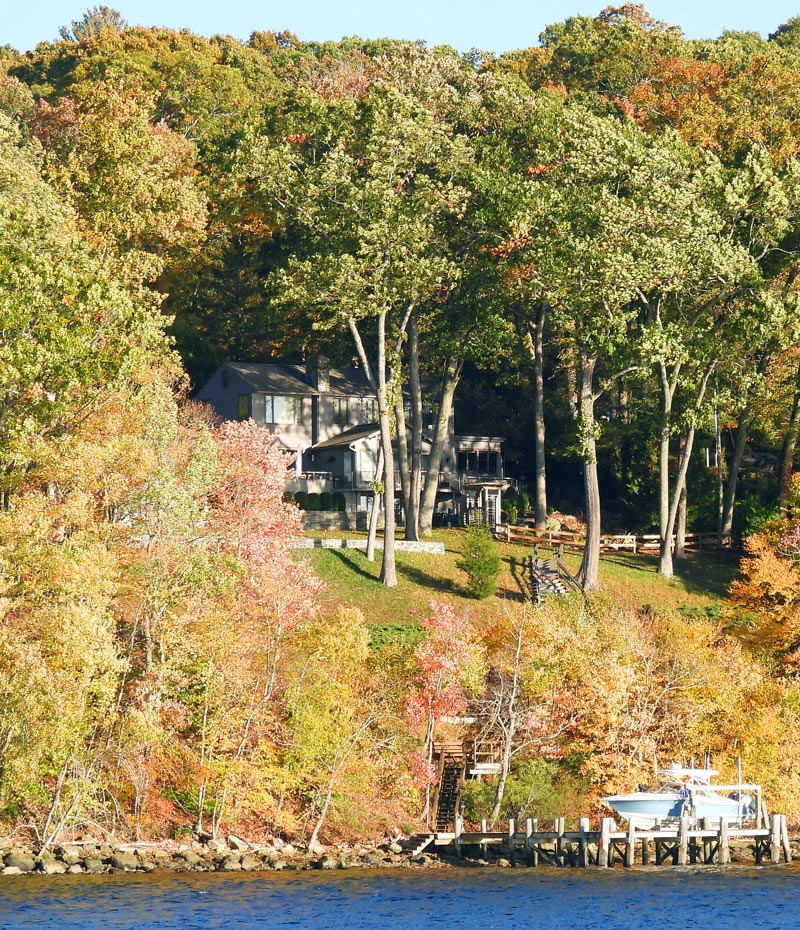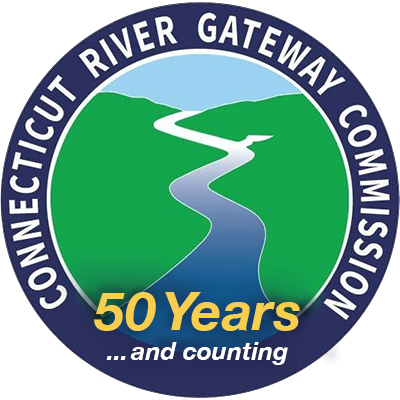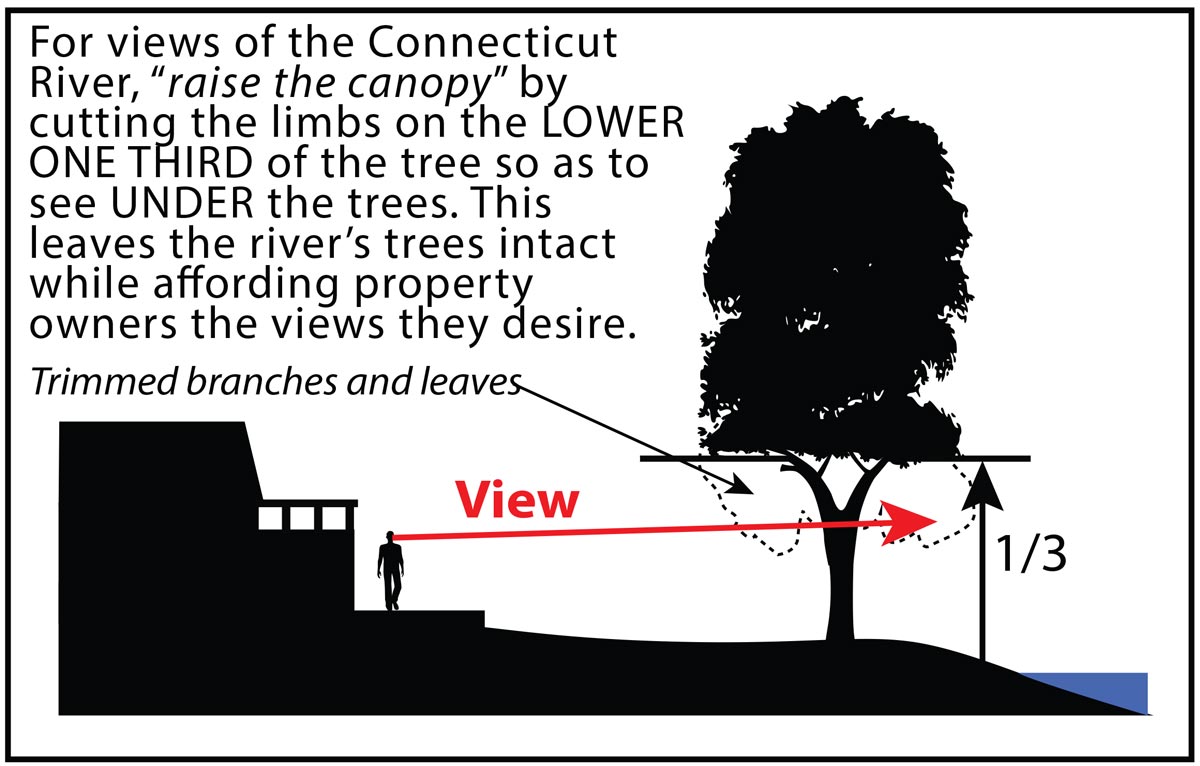What Can I Do?
Trees and Vegetation
Greg Futoma
A natural riverside, often forested, keeps the lower Connecticut River valley especially picturesque. This beautiful countryside is why many wish to live in the Zone. The coastal forest also protects hillsides from erosion and reduces the amount of soil sediment and pollutants running into the river.
Homeowners naturally want river views from their property. Great views can still be achieved while preserving the river’s traditional scene for homeowners, next-door neighbors, and those across the river, along with people traveling on the water.
As an arborist, landscaper, tree service or design professional, you can help keep the river beautiful by suggesting practical solutions, rather than clearcutting trees and laying bare clients’ hillsides.
Selective tree pruning, often called “limbing up,” allows property owners their wonderful views, while neighbors and river users still enjoy natural vistas. An effective rule of thumb is to “raise the canopy” by pruning the lower third of trees so residents can see under the foliage.
Beyond preserving our beautiful riverside scenery, your recommendations can benefit clients in other ways.
Naturally situated homes are ultimately more attractive for owners and for future real estate purchasers. Foundation and yard plantings enhance architecture, reduce erosion, help cool homes during summer, and help fight climate change!
Native plantings greatly benefit our natural ecosystems and habitat too. With your advice, a home’s landscaping can provide vibrant colors throughout the growing season and the gorgeous reds and yellows that are a hallmark of fall in New England.
Native plantings may require less maintenance, and a natural yard won’t need the fertilizer, pesticides, herbicide that a lawn usually requires, saving homeowners money and leaving their land healthier. As our climate increasingly experiences dry or drought periods, native plantings need much less water, conserving another critical resource, especially if a home relies on a well.

Working with the Commission
When the Connecticut River Gateway Commission reviews applications to local Zoning Boards of Appeals and Planning & Zoning Commissions, it may request that local approval be conditioned on limiting the removal of mature trees or call for planting native shrubs. If mature trees do need to be removed for construction, replacement trees can compensate for their loss.
The Gateway Commission will work with you and your clients to determine how landscaping and tree work can minimize negative impacts. We seek solutions that satisfy property owners, the Commission and local agencies.
The Commission’s goal is to work with professionals and homeowners in the lower river valley to keep the Zone beautiful and desirable for all.

Connecticut’s Largest Island is in Lyme
Selden Island on the east side of the Connecticut River was created in 1854 by storm runoff that separated it from mainland Lyme. At 604 acres, it is the largest Connecticut island. Once a farm and later a stone quarry that produced red granite schist for paving, today it contains Selden Neck State Park which is only accessible by boat — as the state’s sole island state park.

